The Independent's journalism is supported by our readers. When you purchase through links on our site, we may earn commission.
Table for one: Solo dining is on the rise in the UK – here’s how (and why) to do it
Almost one in six of us in Britain enjoy eating out alone, and restaurants are catching up with a trend that is no longer seen as strange or taboo. Freed from the unwanted table in the corner, solo dining is booming, discovers Francesca Specter, who also picks out five places that are perfect for a glorious meal (without unwanted company!)

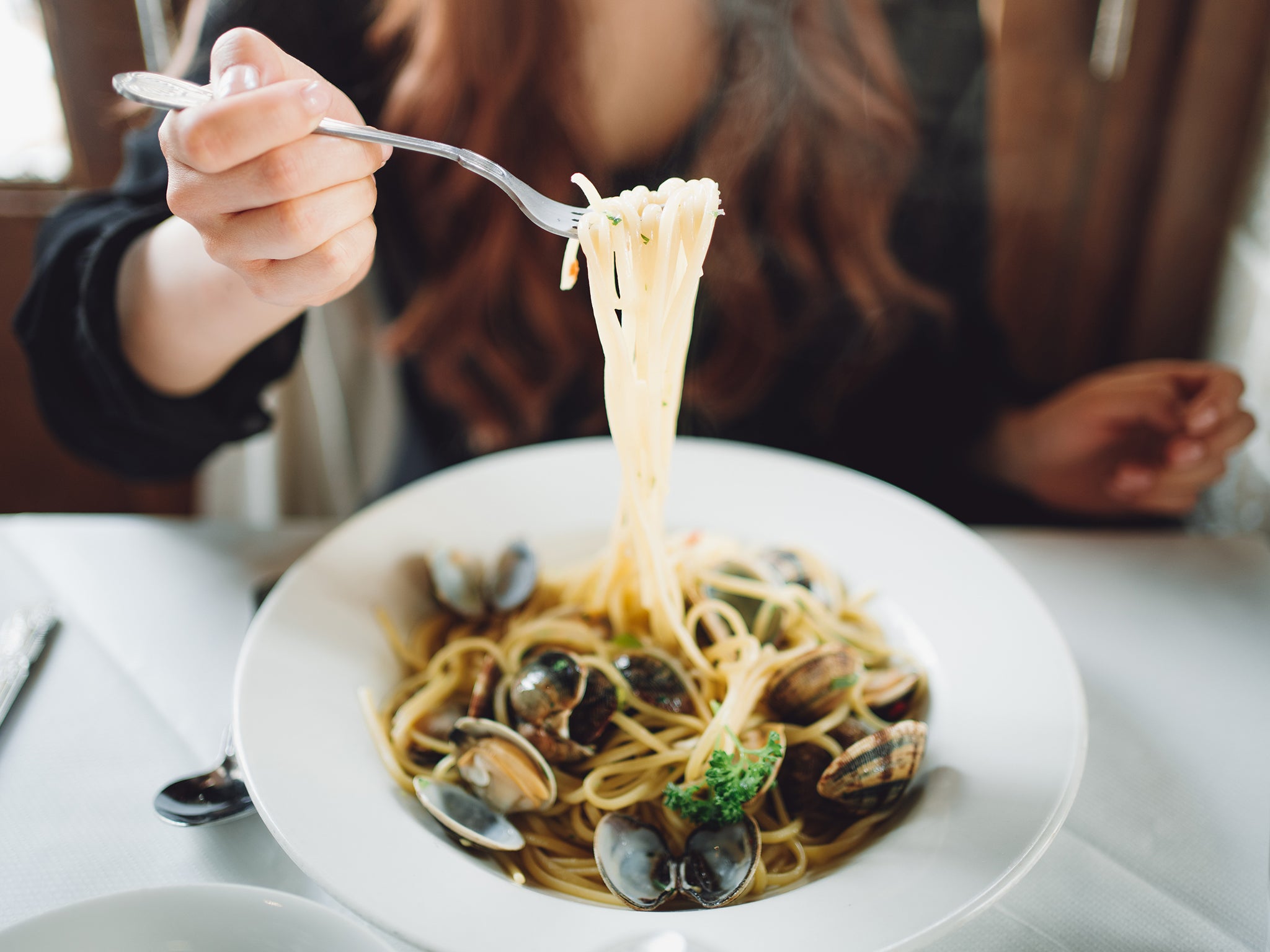
Picture the scene: you’re sitting alone in a busy restaurant, an empty seat in front of you and a single place setting, with only the backdrop of other tables’ chatter for company. For some, this is a nightmare scenario – but, for a rising proportion of Brits, it’s a coveted luxury. That’s according to the latest data from OpenTable, which reported that almost one in six Brits (17 per cent) are fans of dining alone, with a 4 per cent rise in booking for tables for one in the past year alone.
Interest in solo dining has been steadily creeping up in the past five years, with Google Trends search data for “dining solo” rising 260 per cent since November 2019. Far from a shameful scenario, solo dining is increasingly becoming an “aesthetic food(ie) movement” in its own right, according to a study published in the Journal of Consumer Culture. New York based portrait photographer Nancy A Scherl’s 2022 book, Dining Alone: In the Company of Solitude, elevates the solo diner in its dignified portraits.
While the Living Well Index stats in 2018 found that a third of UK adults eat alone all or most of the time – a factor that, the report suggested, correlated with the nation’s declining sense of wellbeing – the conscious act of dining alone is increasingly identified as a favoured joy. Food critic Jay Rayner has described eating half a roast duck in London’s Chinatown as his “idea of heaven”, while Nigella Lawson’s description of solo dining, in her book Cook, Eat, Repeat, as a “solo ceremony for the senses” might just as aptly be applied to dining out. Actor and comedian Rose Matafeo has described eating alone as “her favourite thing ever”, posting on Twitter/X about her enjoyment of “one very huge expensive meal a day” during a solo holiday. Across the Atlantic, Rami Malek has been known to enjoy a solo feast of pork tacos and ceviche in New York’s Hotel Americano, and Ben Affleck’s been photographed dining alone on numerous occasions at various LA hotspots.
It’s a shift not lost on the restaurant industry. Establishments are now offering incentives for solos, with Italian chain Vapiano launching a National Solo Dining Day on 16 April this year, with a 40 per cent discount for solos. Vapiano follows in the footsteps of the likes of Brutto in Clerkenwell offering complimentary spritz cocktails to all solo diners (a response to last summer’s controversy over two-Michelin-starred restaurant Alex Dilling’s decision to double-charge solos for its tasting menu) and Carne in Hove, which last year launched Solo Dining September – where solos were offered a glass of wine on the house.
Jesper Konstantinov, co-owner of Swedish restaurant chain Urban Deli, has observed a tide change in attitudes over the decade he’s been in the industry: “When I started working as a chef in the late Nineties, the solo diners were almost discouraged. Many, myself included, began to see the potential in solo diners, often they can make up a decent part of the clientele on otherwise quiet nights.”
As the author of Alonement, a book that explores the joy of alone time (including solo dining), and a host of an interview podcast of the same name – where guests share their experiences of solitude – I’ve had countless conversations about solo dining. Food writer Felicity Cloake told me that for her “the idea of eating on your own is an aspirational one… there’s a glamour about it”. Author Daisy Buchanan described marking a milestone birthday with a lunch that ended with a knickerbocker glory for one.
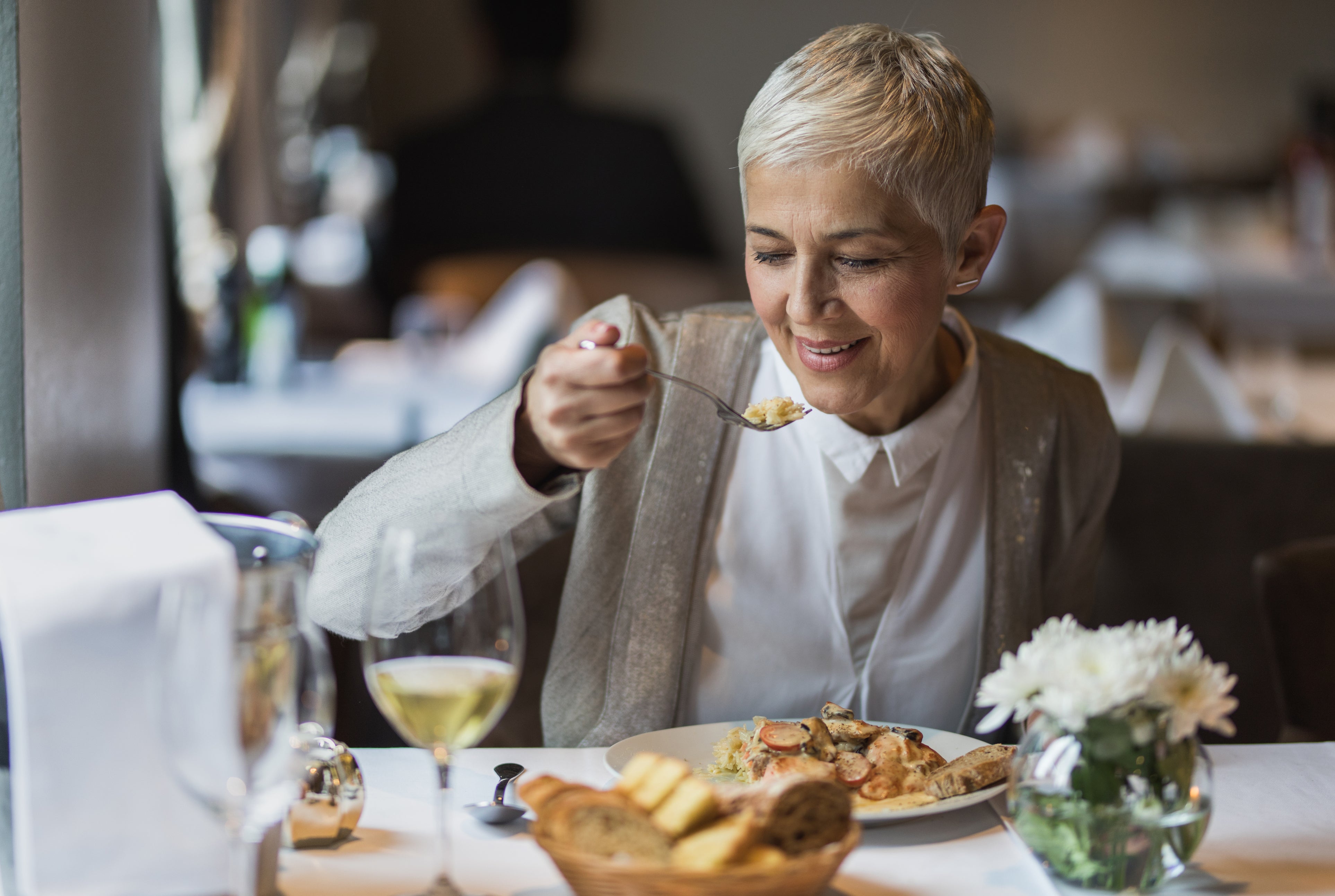
While some may struggle to understand why people would dine alone out of choice – rather than out of necessity for business, or, God forbid, through being stood up – solo dining fans aren’t short of reasons. “It’s about giving myself a little treat,” Cloake tells me, when I contact her about this feature. “When you eat alone you think more about the food.” “There’s something about eating on your own in restaurants that, when it goes well, feels like a truly elevated level of self-care – a gift to yourself,” adds the anonymous author of popular food blog, Edible Reading. “Dining solo gives you the opportunity to do what you want. Eat what you want, drink what you want,” offers George Hersey, restaurant director of the Michelin-starred Frog by Adam Handling in Covent Garden.
Others use solo dining as a meaningful way to mark a personal achievement. Recently, Hersey received a booking from a study-abroad student who had passed a major exam and wanted to celebrate, but didn’t have any close friends or family in the country to dine with. “He told us this on the phone and was nervous to come and dine alone. We reassured him and told him that we would make it special – then we personalised his menu, and presented a card from Adam [Handling, the chef behind the restaurant] that was placed waiting for him on his counter table to say congratulations. He said it was the best meal of his life.”
As examples like this one illustrate, solo dining isn’t always through choice – many of us will know the experience of being new to a city; travelling regularly for work; or experiencing a shift in circumstances (for instance, a breakup) that make it harder to find readily available dining companions. Yet, it often leads to a longer-term love affair. This was also the case for Edible Reading’s author: “I first started eating out when my former partner was away on business a lot... I had to make myself do it. The best part of a decade later, learning to value experiences like that has been of huge benefit to me.”
While many might fear poor treatment as a solo diner, such stories demonstrate the opposite may well be true – particularly at higher-end establishments. “We have always welcomed solo diners, who often become regulars and feel like part of the family,” says Hersey. “During our most recent refurbishment a few months ago, we even built in a table for one on the kitchen counter, where solo diners can interact with the chefs.”
It’s an inside secret that some of the most coveted restaurant seats are much more accessible to solos, as London restaurant PR Hugh Richard Wright tells me. “Mountain in Soho, for example, can almost always squeeze in a one-person walk-in, so don’t be afraid to pop in and ask.” Hersey, too, uses solo dining as an opportunity to visit restaurants that would otherwise be “impossible” to get a booking at. “At counter-based restaurants like Barrafina and Kiln in Soho, it’s always much easier to get a spot for one.”
I first started eating out when my former partner was away on business a lot... I had to make myself do it. The best part of a decade later, learning to value experiences like that has been of huge benefit to me
Of course, solo dining doesn’t have to be a glamorous, or pricey, affair – it’s also an occasion for giving your full attention to messier, casual kinds of cuisines that you’d probably enjoy more without company. There’s a concept known as “low-interaction dining” (popularised by Japanese restaurant franchise Ichiran Ramen, which has overseas branches in New York and Taiwan). On the chain’s website, customers are encouraged to dine alone, in silence, in what’s referred to as a “ramen focus booth” (also known as a flavour-concentration, or shuchu booth) even ordering via a digital menu or receiving food through a hatch in front of them in order to minimise contact.
If you’re UK-based, you can experience a similar phenomenon at Yokocho on Heddon Street (just off Regent Street in central London), where diners have their own individual booths enclosed in curtains. It’s perhaps no coincidence that, according to a survey conducted by noodle chain Marugame Udon, 35 per cent of UK customers visit on their own. Cloake also admits to particularly enjoying “messy” foods as a solo diner. “Noodles of all kinds are great to eat solo, because you don’t have to worry that the person sitting across from you is disgusted by your slurping. The same goes for massive sandwiches.” The popularity of such locations is reminiscent of Andy Warhol’s proposal, back in the Seventies, to open a chain of fast-food restaurants called “Andy-Mats”, conceived as “the restaurant for the lonely person”. Although Warhol’s project ultimately fell through, the artist was – as ever – ahead of the zeitgeist.
But where to begin if you’re new to solo dining? First, consider your timing. According to Andre Falcao, guest relations manager at the NoMad London hotel that boasts both a sit-down restaurant and a counter-dining style bar, Side Hustle, “It’s usually better to eat early or late if you’re dining alone. Outside of peak times, the team will have free time to interact with the guests, build a connection and offer recommendations.” If you’re predisposed to an earlier dinner, or a European-style late supper (NoMad takes bookings until 22:15), this may well be the time to honour that impulse.
In the same vein, consider eating on an off-peak night (according to the OpenTable data, Mondays, Tuesdays and Wednesdays are the most popular evenings for solo reservations). While none of this is a hard and fast rule (Hersey dislikes forcing customers into time slots “just because someone is eating alone”), it may well be a pragmatic approach.
Next, where to sit? This is a pertinent question before even setting foot in the restaurant, as the solo customer often has a broader choice of seating arrangements than a group. For instance, Konstantinov has integrated three distinct purpose-built “solo” seatings in his restaurants: large communal tables, bar dining and an “open-kitchen” format (“Being next to a bustling kitchen creates a context and atmosphere that the solo diner can easily become a part of”). While it’s no secret that traditional sit-down hospitality – designed around square tables with multiple chairs – might feel hostile to the solo customer, UK venues are making similar adaptations. Manchester-based British bistro Higher Ground has integrated a polished concrete countertop surrounding the kitchen, while Sheffield-based Bench’s unique design of a high-seated bench circling the room is tailored to solos and groups alike.
This variety provides diners with an individualised choice, as Holly Hallam, managing director of DesignLSM, a design agency specialising in hospitality, describes. For instance, for the “solo extrovert”, Hallam integrates “communal tables and sought-after seats at the bar, providing guests with the chance to spark conversation with those around them and engage with staff”. In contrast, for those seeking “solitary enjoyment”, she adds “cosy corners and small intimate booths … mindfully placed away from the watchful eyes of other diners, with amenities such as wifi and reading materials offered”. Then there’s the aforementioned shuchu booths – the most solitude-friendly of set-ups. Cloake, meanwhile, enjoys a window seat for the joy of people-watching. Or else a view of nature might appeal: Lambeth’s Garden Museum cafe – where diners enjoy a view of the interior garden courtyard – is oft-recommended in solo-dining guides.
The next step is to approach your solo dining with an appearance of confidence. This starts from the moment you walk in: “Don’t approach it with an apologetic air – I’ll always remember the French maitre d’ who scoffed when I said, slightly shamefacedly that it was ‘just me’, and told me fiercely I was quite enough to merit a table!” says Cloake. You might take inspiration from the ancient Roman statesman Lucius Lucullus, whom (as Classical literature relates) chastised a servant for serving him a modest one course meal on account of the fact he was dining alone. “What savest thou? Dost thou not know that to-day Lucullus dines with Lucullus?”
Don’t be afraid to ask to move if you feel you’ve been given a bad table that you wouldn’t feel comfortable at if you were with others – you’re every bit as important alone as you are in company!
Wright offers a helpful pep talk: “Remember it’s perfectly normal to eat alone, so you’re not asking for anything out of the ordinary in wanting a table for one. Also, don’t be afraid to ask to move if you feel you’ve been given a bad table that you wouldn’t feel comfortable at if you were with others – you’re every bit as important alone as you are in company!”
You might take inspiration from the numerous examples on TikTok (where videos hashtagged #solodining have garnered 10.8 million views), which feature solo diners – predominantly female – getting dressed up to eat alone, often at high-end restaurants. If still in doubt, you can always take the exposure therapy approach, and practise with a less-intimidating lunch-for-one before graduating to dinner. “It won’t be as scary, as a lot of businesspeople dine solo at that time,” suggests Falcao.
A common concern is how to entertain oneself in the absence of a companion. While you may be surprised by how much more stimulating the restaurant itself is (music, decor, food and drink) when you’re by yourself, it always pays to be prepared. “Think about how you’ll fill the time that would normally be taken up with conversation,” says Wright. “I like to take a book or newspaper rather than just scroll on my phone.” Videos and calls are also a no-no: “I’d advise against watching that Netflix show you’ve been wanting to catch up on, or making FaceTime calls as I’ve seen people doing – it’s distracting for others around you and antisocial.” Besides, once you give yourself the chance to enjoy your table for one, bearing in mind the advice above, your Netflix queue or unanswered calls may well be the last thing on your mind.
Finally, solo dining isn’t the time to cut corners. In the American sitcom, Parks and Recreation, characters Tom and Donna celebrate an annual “treat yo’ self” day for guilt-free, self-indulgent pleasures: solo dining is a good time to follow suit. “My main tip is not to be parsimonious,” says Edible Reading. “Order that extra course, or that second glass of wine. There’s no point doing it if you’re going to ration yourself.” And if you’ve had a great experience? Be sure to tip the staff responsible: “Make sure you have the best time you can, and that they have the best time possible making that happen.”
5 of the UK’s best solo dining spots
Barrafina
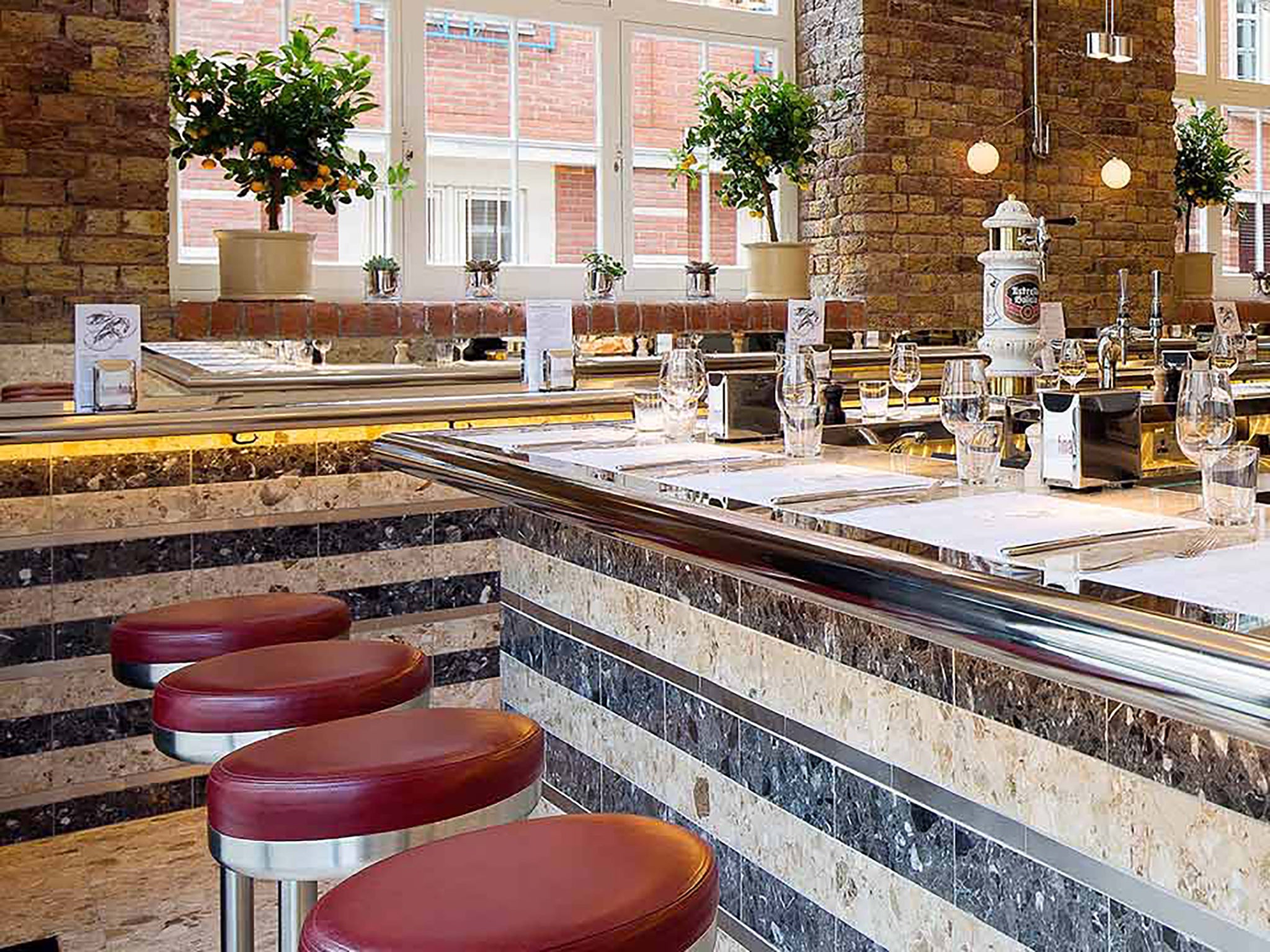
Circumvent the no-bookings policy at Dean Street, the buzziest branch of this beloved Spanish tapas franchise, by nabbing a counter seat for one in front of the open kitchen. Treat yourself to a slice of their Basque cheesecake afterwards – you’ll be glad you don’t have to share.
www.barrafina.co.uk 26-27 Dean St, London W1D 3LL
Honey & Co, Bloomsbury
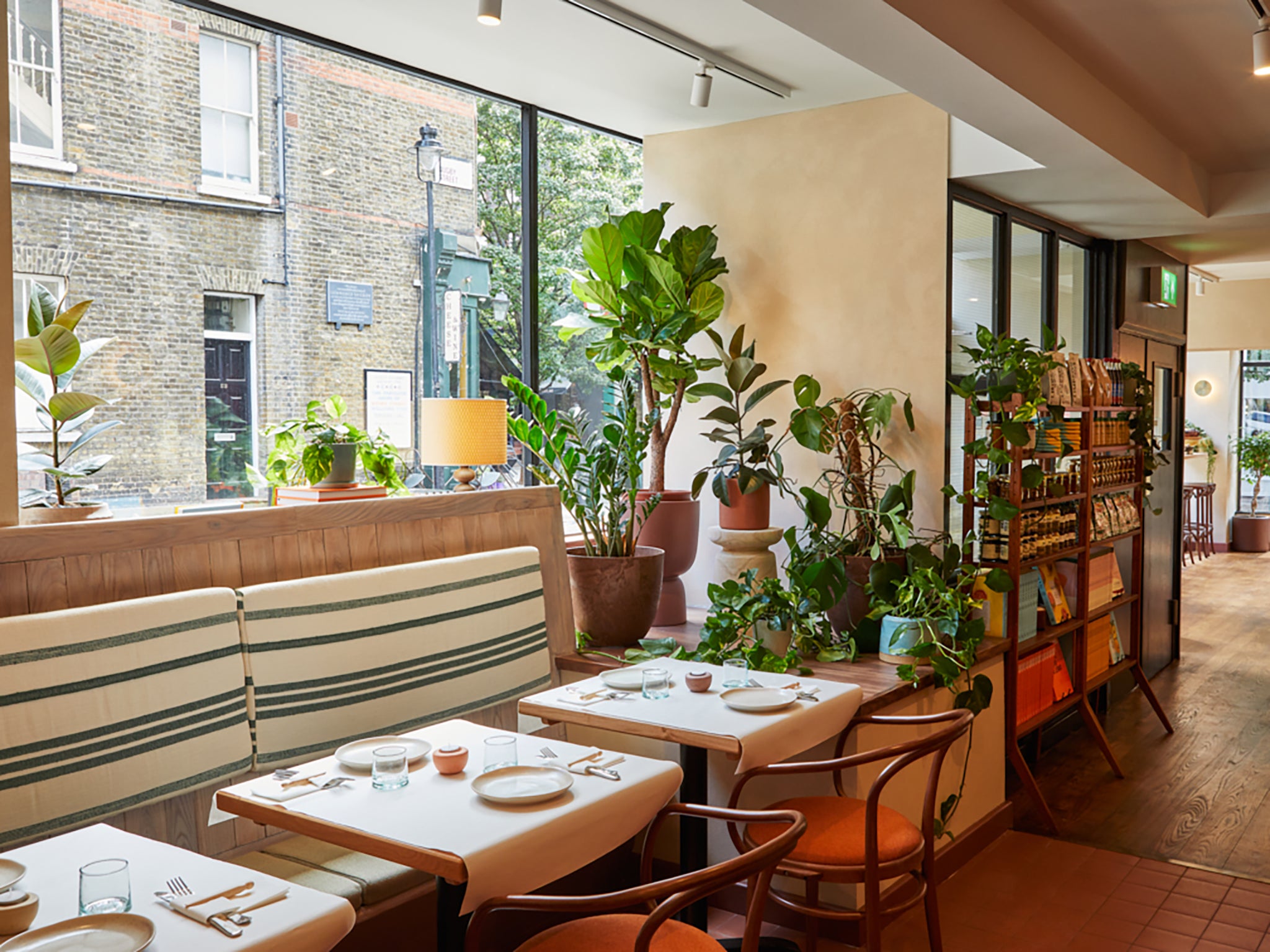
A Michelin Guide-recommended solo dining spot, Honey & Co’s Bloomsbury branch offers counter-dining, an affordable set lunch menu and a welcoming atmosphere (husband and wife team Sarit and Itamar are often on site).
www.honeyandco.co.uk 54 Lamb’s Conduit St, London WC1N 3LW
Wild by Tart
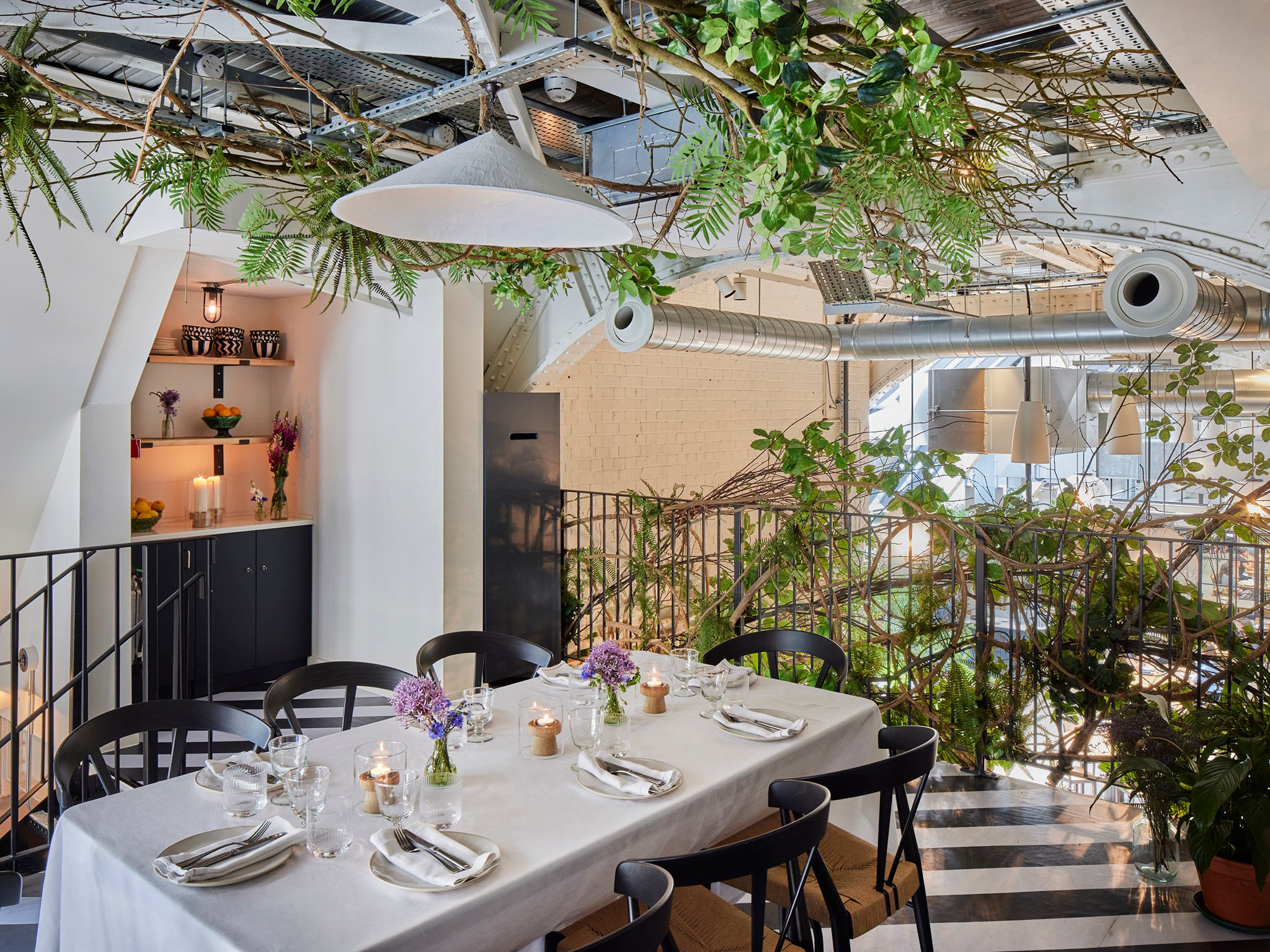
Another one highlighted by the Michelin Guide, this cosy Belgravia brasserie boasts numerous “nooks and crannies for solo diners”, together with an open kitchen for those for fancy interacting with the chefs over a charcoal grill.
www.wildbytart.com 3-4, Eccleston Yards, London SW1W 9AZ
Shoryu Ramen
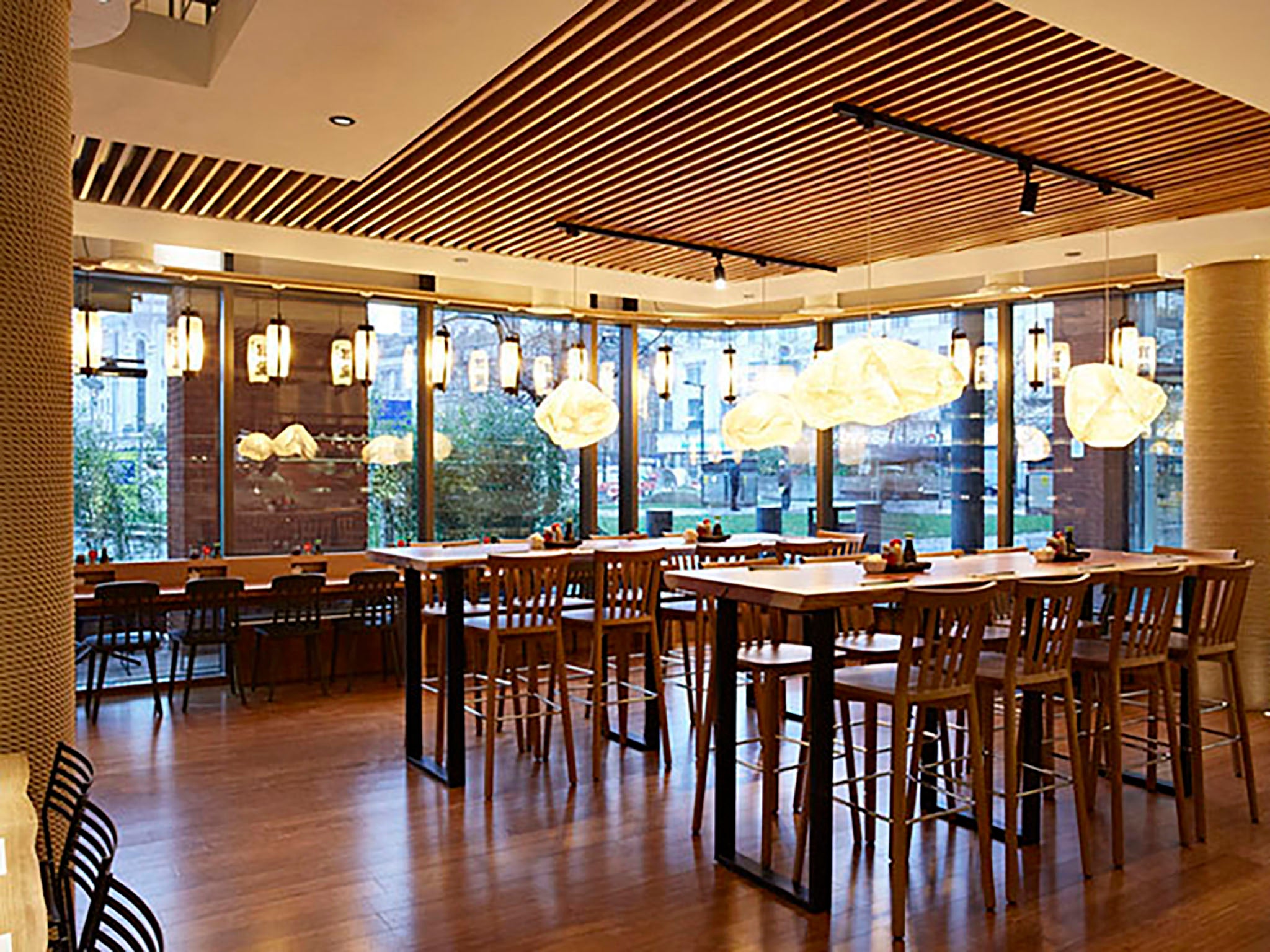
Intrigued by “low-interaction dining”? Be at one with your steaming bowl of 12-hour pork broth at this beloved ramen spot. The bao bun sides also come as single portions – it would be rude not to add one to your order.
www.shoryuramen.com 1 Piccadilly Gardens, Manchester M1 1RG
Marmo
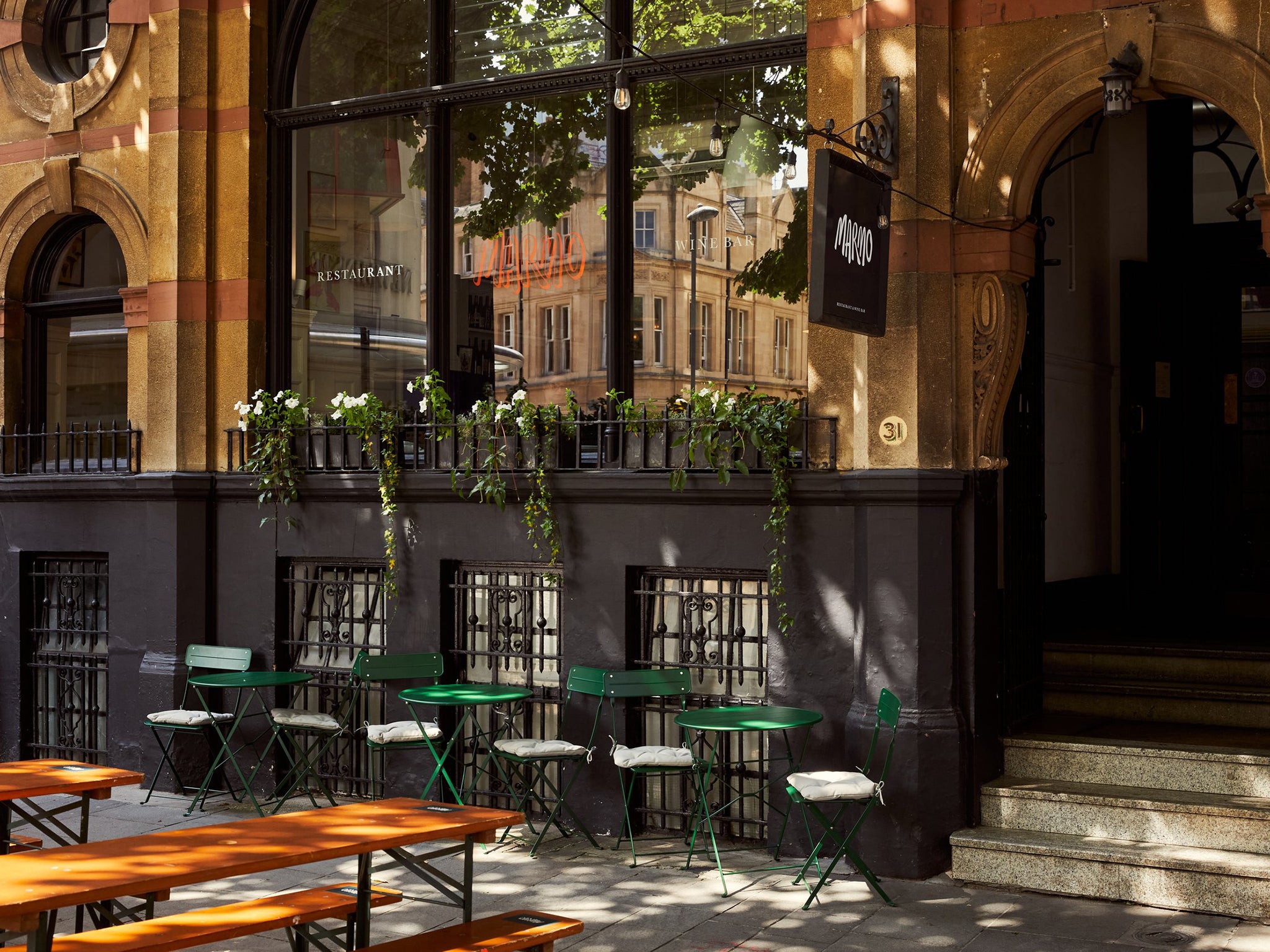
This Bristol-based restaurant and wine bar, which boasts individual tables, is a chic choice for solo diners. Reduce decision fatigue with the concise, curated menu focusing on locally sourced ingredients, and enjoy the generous range of wines by the glass.
www.marmo.restaurant 31 Baldwin St, Bristol BS1 1RG






Join our commenting forum
Join thought-provoking conversations, follow other Independent readers and see their replies
Comments